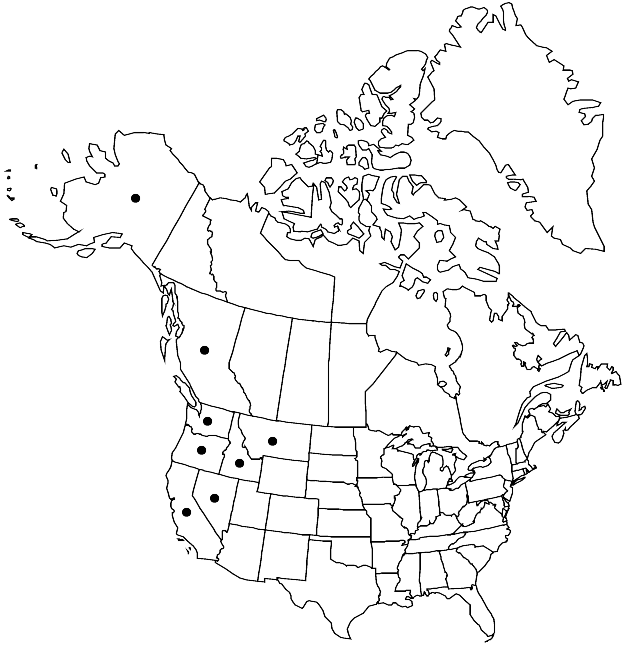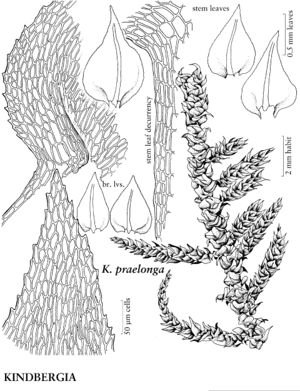Difference between revisions of "Kindbergia praelonga"
Lindbergia 8: 54. 1982.
imported>Volume Importer |
imported>Volume Importer |
||
| Line 74: | Line 74: | ||
|publication year=1982 | |publication year=1982 | ||
|special status=Illustrated | |special status=Illustrated | ||
| − | |source xml=https:// | + | |source xml=https://bitbucket.org/aafc-mbb/fna-data-curation/src/2e0870ddd59836b60bcf96646a41e87ea5a5943a/coarse_grained_fna_xml/V28/V28_697.xml |
|genus=Kindbergia | |genus=Kindbergia | ||
|species=Kindbergia praelonga | |species=Kindbergia praelonga | ||
Latest revision as of 21:37, 5 November 2020
Plants medium-sized to moderately large, not conspicuously plumose, green or rarely yellow-green. Stems 3–10 cm, sympodial branching common, pinnate branches 6–10(–20) mm, often with secondary branches. Stem leaves 0.7–1.4 × (0.5–)0.7–1.2 mm; laminal cells 20–75 × 5–6 µm. Branch leaves not plicate, (0.3–)0.6–1.2 × (0.1–)0.2–0.4(–0.7) mm. Seta 1.5–2.5 cm. Spores 12–17 µm.
Habitat: Soil, mesic to wet places, in or near forests
Elevation: low to high elevations (0-2600 m)
Distribution

B.C., Alaska, Calif., Idaho, Mont., Nev., Oreg., Wash., Mexico, Central America, South America, Europe, w Asia, n, s Africa, Atlantic Islands, Pacific Islands (New Zealand), Australia.
Discussion
Two taxa have commonly been recognized within Kindbergia praelonga: Eurhynchium praelongum var. stokesii and K. brittoniae. The former is more robust than typical K. praelonga and has mostly simple branches, as with K. oregana. In contrast, K. brittoniae is a more slender plant with slightly roughened to almost smooth setae. Transitions between these extremes make it difficult to segregate either taxon (K. S. Giles 1990). Kindbergia praelonga was reported several times from eastern North America, but correctly identified collections have not been seen to date. It is most commonly confused with Sciuro-hypnum starkei or Bryhnia novae-angliae. However, S. starkei is autoicous with frequent sporophyte production; the conic operculum is the most reliable differentiating character state, although not present in all specimens. Bryhnia is distinct in its not so regular branching, usually strongly prorate laminal cells with prorae on each cell, not only on few cells as in Kindbergia.
Selected References
None.
